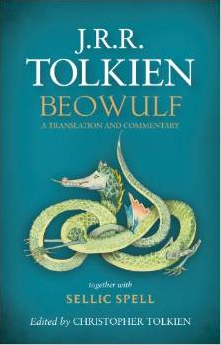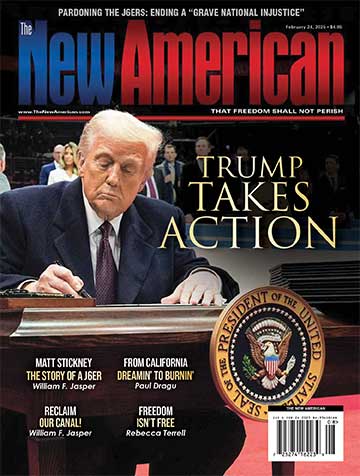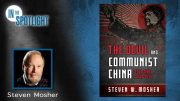
With the release of the third movie in Peter Jackson’s adaptation of J.R.R. Tolkien’s The Hobbit now imminent, fans of Tolkien’s writings await the forthcoming film with a mix of excitement and dread. It is not the goal of this review to recite the various merits and shortcomings of a film which will no doubt prove to be a “hit” at the box office; rather, we examine a recently-released addition to the corpus of Tolkien’s published works: his 1926 translation of the epic poem Beowulf. While it is an oft-cited fact that Tolkien was an “Oxford don,” Beowulf offers another concrete example of both the quality of his scholarship and his abilities as an instructor.
Beowulf: A Translation and Commentary is the latest product of the labors of Tolkien’s son, Christopher Tolkien. Christopher presents the readers with a masterful blend of his father’s efforts to translate, explain, and interpret the ancient text of one of the most significant early English works.
Since its discovery in the eighteenth century, Beowulf has sparked the imagination of the English-speaking world. An extensive literature has grown over the generations since the first modern translation of the Old English was published in 1820, with educated guesses placing the authorship of the poem between the eighth and eleventh centuries. One of the enduring points to emerge over nearly two centuries of examination of Beowulf is that the poem demonstrates a profound beauty and depth of expression found in one of our first known English-language compositions.
Christopher Tolkien’s presentation of his father’s translation is combined with a section of notes on the text of the translation and an extensive commentary drawn from J.R.R. Tolkien’s class lecture notes. These resources are extremely helpful when reading the translation; this reader was left wishing that the textual notes had been published as footnotes to the translation, rather than being printed almost as an appendix to the translation — a serious reading of Beowulf will require the simultaneous use of several bookmarks.
Tolkien’s commentary gives the reader some sense of the writer’s professorial role, which combined insightful scholarship with humor. Tolkien includes many helpful cultural and theological observations concerning the worldview of the original author and helps to place Beowulf within the context of its age. There is enough detail to be of benefit to careful students of Old English, but the work remains accessible enough to be approached by those who are merely curious without fear that they will be drowned in linguistic details.
Following the translation, notes and commentary, Christopher Tolkien has also included several related works: Sellic Spell and The Lay of Beowulf. Sellic Spell is an amazing work in which J.R.R. Tolkien endeavored to imaginatively recreate the source for the folk-tale which the author of Beowulf would have used to write the epic poem; in Tolkien’s words, “This version is a story, not the story. It is only to a limited extent an attempt to reconstruct the Anglo-Saxon tale that lies behind the folk-tale elements in Beowulf….” The reader thus encounters not only a modern English rendering of Sellic Spell — but also the Old English text which Tolkien wrote before translating it into Modern English. The scholarship — combined with poetic sensibilities — which rests behind such an effort is truly staggering.
Christopher Tolkien titles the final work contained in this volume as The Lay of Beowulf; however, he describes the work as “two poems, or two versions of a poem” and cautions, “I have found no mention of these lays even of the slightest nature among my father’s writings (apart from the name ‘Beowulf’ pencilled on an early typewritten list of his poems).” It is fitting that in these final pages, something of J.R.R. Tolkien’s vocation as a father shines forth; in his son’s words: “On the cover page there is also a pencilled note ‘Intended to be sung.’ As mentioned in the Preface I remember his singing this ballad to me when I was seven or eight years old, in the early 1930s (but of course it may have been in existence years before that).”
Christopher Tolkien admonishes readers not to consider the published work as a new “edition” of the poem; rather, he deems that it “should best be regarded as a “memorial volume,” a “portrait” (as it were) of the scholar in his time, in words of his own, “hitherto unpublished.” However, given the quality of the translation and the extensive textual notes and commentary on the text, readers may readily come to regard J.R.R. Tolkien’s Beowulf: A Translation and Commentary as a work which is both readily accessible to the popular reader and of substantial merit to scholars in the midst of their studies. To the extent that it is a “memorial volume,” Tolkien’s Beowulf is a powerful reminder that he was a gifted academic as well as one of the most popular authors of the twentieth century. Few individuals in modern history have bridged the gap between scholarship and popular acclaim with the seeming ease with which J.R.R. Tolkien did. While film adaptations of his popular works may help introduce a new generation to his writings, the sound scholarship which is manifest throughout his published works demonstrates the intellectual capacity which brought him to teach at Oxford for decades, and it is a cultural treasure which continues to benefit readers over four decades after his death.
J.R.R. Tolkien, Beowulf: A Translation and Commentary, (Boston and New York: Houghton Mifflin Harcourt, 2014). ISBN 978-0544442788. Hardcover. 425 pages. $28.00.



